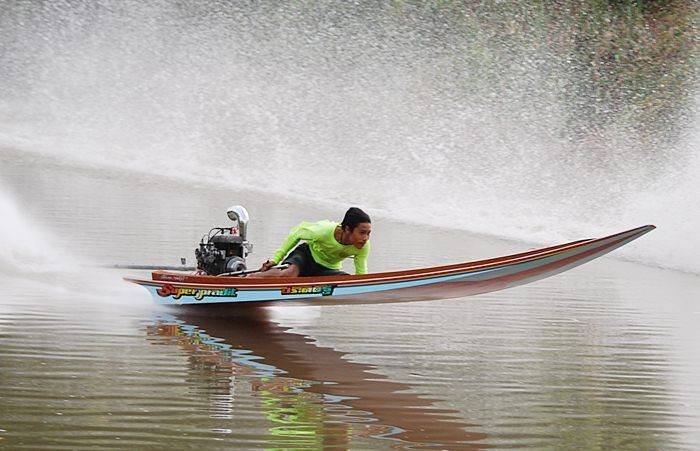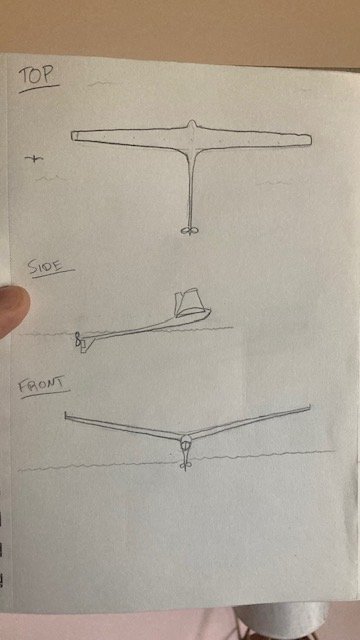Rustybucket777
ACCESS: Restricted
- Joined
- 5 May 2025
- Messages
- 3
- Reaction score
- 4
I had a stupid idea a week ago and can’t figure out if it could work or if it's a bust...
I saw videos of Asian “long tail” speed boats on the internet. Long slender planing craft with an equally long propeller shaft sticking out of the back. These things fly, and sometimes literally. If the boat pitches too high, the hull becomes a wing and it will get lifted clean out of the water.

The idea is: what if it was meant to be airborne? What if it had wings and it’s normal operating mode was to be lifted a few feet out of the water, with only a surface-piercing propeller and maybe a rudder still in the water? Kind of like a seaplane constantly about to take off, in mild ground effect the whole time. Yes I realize I'm just describing a GEV or Ekranoplan, but the idea isn't to optimize for maximum ground effect. Rather, the idea is to get the hull out of the water but keep the propulsion in the water.

Some design constraints: Assume an infinite and smooth lake surface. Assume unlimited power-to-weight. And assume no ambient wind.
All the risks of near-ground flight aside, is it theoretically possible? Let's assume it has the necessary dihedral angle to roll a small amount without touching the ground. Could it achieve dynamic stability to a certain degree? The typical stability modes are difficult to analyze with this craft because of the different fluids on the wing vs the tail. What control surfaces would be necessary to achieve reasonably stable flight at constant speed?
And of course, what’s the one big thing I’m missing that makes this whole idea stupid? : D
I saw videos of Asian “long tail” speed boats on the internet. Long slender planing craft with an equally long propeller shaft sticking out of the back. These things fly, and sometimes literally. If the boat pitches too high, the hull becomes a wing and it will get lifted clean out of the water.

The idea is: what if it was meant to be airborne? What if it had wings and it’s normal operating mode was to be lifted a few feet out of the water, with only a surface-piercing propeller and maybe a rudder still in the water? Kind of like a seaplane constantly about to take off, in mild ground effect the whole time. Yes I realize I'm just describing a GEV or Ekranoplan, but the idea isn't to optimize for maximum ground effect. Rather, the idea is to get the hull out of the water but keep the propulsion in the water.

Some design constraints: Assume an infinite and smooth lake surface. Assume unlimited power-to-weight. And assume no ambient wind.
All the risks of near-ground flight aside, is it theoretically possible? Let's assume it has the necessary dihedral angle to roll a small amount without touching the ground. Could it achieve dynamic stability to a certain degree? The typical stability modes are difficult to analyze with this craft because of the different fluids on the wing vs the tail. What control surfaces would be necessary to achieve reasonably stable flight at constant speed?
And of course, what’s the one big thing I’m missing that makes this whole idea stupid? : D

